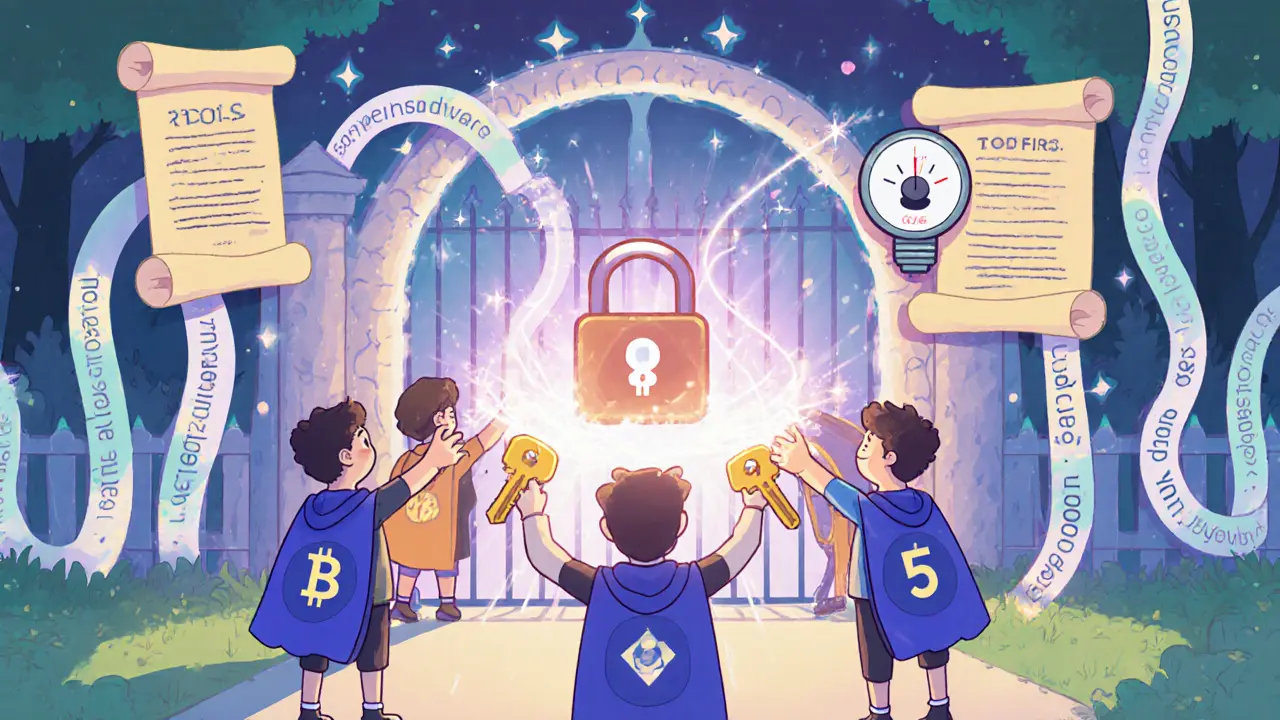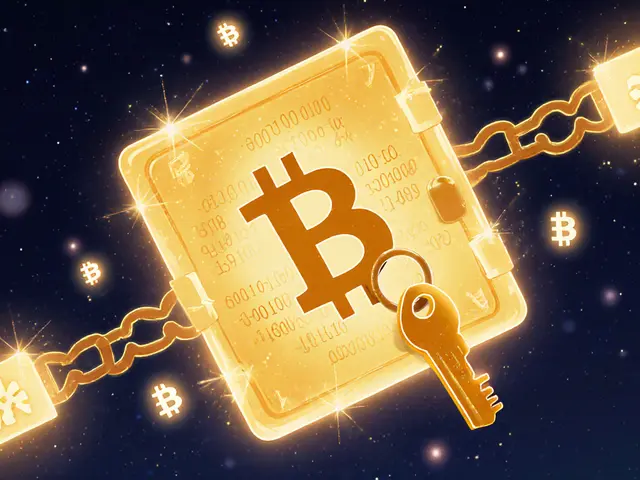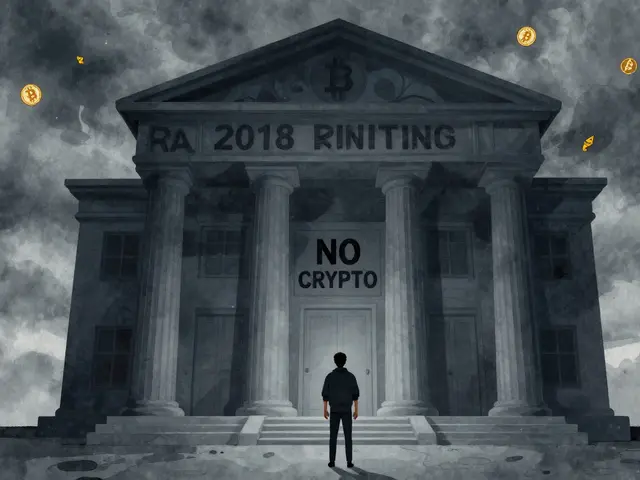DAO Treasury Multisig Configuration Calculator
Treasury Configuration
Recommended Setup
Configuration: 3-of-5
Security Level: High
Gas Cost Estimate: 21,000 - 100,000 gas
This setup provides strong protection against single-key breaches while maintaining reasonable transaction costs.
Why This Configuration?
- Balances security and operational efficiency
- Matches standard recommendations for $100K-$1M treasuries
- Reduces risk of single-point failures
- Supports transparent governance and community oversight
Configuration Guidelines
Small Treasury ($10K - $100K): 2-of-3 configuration recommended for quick decision-making.
Medium Treasury ($100K - $1M): 3-of-5 configuration provides optimal balance of security and efficiency.
Large Treasury ($1M - $10M): 4-of-7 configuration offers enhanced security for substantial assets.
Very Large Treasury (> $10M): 5-of-9 configuration ensures maximum protection for enterprise-scale treasuries.
When a DAO needs to protect its funds, multisig wallet is a digital vault that requires multiple private keys to approve a transaction. In plain English, it means no single person can move money alone - you need a group of trusted signers to sign off. That simple idea solves a huge problem: the single point of failure that haunts every single‑signature wallet.
How Multisig Works Under the Hood
At its core, a multisig wallet is a smart contract that stores the rules for spending. Each participant creates a cryptographic key pair, stores the private key (often on a hardware device), and registers the public key with the contract. When a DAO member initiates a payment, the contract checks whether the number of valid signatures meets the pre‑defined threshold, for example 3‑of‑5.
Common configurations are:
- 2‑of‑3 - good for small treasuries where speed matters.
- 3‑of‑5 - the sweet spot for most community DAOs ($100K‑$1M).
- 4‑of‑7 - recommended by Vitalik Buterin for larger protocol‑owned liquidity.
Because each signature is a cryptographic proof, an attacker would have to compromise multiple independent keys - a feat that is exponentially harder than stealing one seed phrase.
Why DAOs Prefer Multisig Over Centralized Custodians
Traditional custodians like Coinbase Custody charge annual fees (0.10‑0.20%) and require trust in a third party. Multisig eliminates that trust layer. The 2023 DAO Security Report from Immunefi shows multisig‑protected DAOs experienced 87% fewer hacks (0.3 incidents per $100M) compared to single‑signature setups (2.3 incidents per $100M). In other words, the odds of a successful breach drop dramatically when you spread control across several people.
Regulators are taking note. The SEC’s February2024 DAO Framework cites multisig as evidence of sufficient decentralization for securities‑law exemptions when you have at least seven signers and a 51% approval threshold.
Key Players: Gnosis Safe and the Ecosystem
Gnosis Safe launched in 2018 and quickly became the standard for DAO treasuries. Its version1.3.0 (released March152023) added gas‑optimizations and a more intuitive UI. Today Gnosis Safe supports 18 blockchains, including Ethereum, Polygon, and Arbitrum, with transaction finality ranging from 12seconds on Polygon to about 15minutes on Ethereum mainnet.
Other notable players include SafeSnap, which integrates with governance platforms, and custom smart‑contract implementations used by protocols like MakerDAO. MakerDAO’s 6‑of‑11 multisig holds over $500million and follows a rigorous key‑rotation policy.

Real‑World Benefits: Security, Transparency, and Governance
Security: Chainalysis data estimates that multisig has prevented roughly $1.2billion in losses since 2020. A concrete example: DAO Maker thwarted a $750k internal fraud attempt in August2022 thanks to its Gnosis Safe setup.
Transparency: Multisig transactions are publicly visible on the blockchain, making it easy for any community member to audit. DAO treasuries can publish a simple “signature log” that shows who approved each spending request.
Governance: By requiring multiple signers, multisig enforces democratic oversight. Index Coop’s April2024 incident response report details how a 5‑of‑9 multisig blocked a $4.2million exploit because two key members withheld their signatures.
Costs and Trade‑offs
Multi‑signature does add complexity. ConsenSys Academy’s 2023 DAO Infrastructure Survey measured a 300‑500% increase in implementation effort compared to single‑signature wallets. You also pay extra gas - a standard transaction costs about 21,000 gas, while a Gnosis Safe execution can range from 21,000to100,000 gas depending on the payload.
Speed is another concern. Multisig DAOs take about 42% longer to respond to security incidents because you need coordination among signers. High‑frequency trading strategies, like Yearn Finance’s yVaults, often migrate to timelock contracts for faster execution.
Nevertheless, the security upside outweighs these drawbacks for most treasury‑size scenarios. A Harvard Business Review study of 200 DAOs found multisig implementation correlated with a 63% higher survival rate after two years.
Implementation Checklist
Getting a multisig treasury up and running involves several steps. Below is a practical checklist that most DAO teams follow:
- Define signer eligibility. Decide the minimum number of members (e.g., 5 signers for a 3‑of‑5 threshold).
- Run a key‑generation ceremony. Use hardware wallets like Ledger or Trezor to generate and store keys offline.
- Deploy the multisig contract. Most teams choose Gnosis Safe because of its UI and audit‑backed code.
- Set the signature threshold. Follow the 2024 Standard DAO Framework: 3‑of‑5 for $100K‑$1M, 4‑of‑7 for $1M‑$10M, 5‑of‑9 for >$10M.
- Configure timelocks. A 24‑hour timelock on configuration changes gives the community a window to react.
- Document key backup procedures. Store encrypted backups in multiple geographic locations; rotate keys every 30days.
- Conduct a security audit. Use firms like OpenZeppelin or Trail of Bits to run the 12‑checkpoint Multisig Security Framework.
Most experienced teams spend 16‑24hours on this process, but onboarding newcomers can take 3‑5weeks of training.
Comparison: Multisig vs Single‑Signature Wallets
| Aspect | Multisig Wallet | Single‑Signature Wallet |
|---|---|---|
| Security model | Requires X of Y signatures; no single point of failure | One private key controls all funds |
| Implementation complexity | Higher (300‑500% more effort) | Low |
| Gas cost (Ethereum) | 21k‑100k per tx | ~21k per tx |
| Governance | Democratic, transparent approvals | Centralized control |
| Incident response time | ~42% slower due to coordination | Immediate (single signer) |
| Hack frequency (per $100M) | 0.3 incidents | 2.3 incidents |
The table makes it clear: you trade a bit of speed and simplicity for a massive boost in security and community trust.

Common Pitfalls and How to Avoid Them
Lost keys. About 23% of DAOs report a signer losing access to their private key. Mitigate by requiring each signer to back up the seed phrase in encrypted hardware and by rotating keys quarterly.
Social engineering. 37% of multisig‑related incidents involve phishing attacks targeting individuals. Enforce strict verification procedures for any signature request - for example, a signed off‑chain confirmation on a dedicated Discord channel.
False sense of security. Dr. AriJuels warns that poor key hygiene can render multisig ineffective. Pair multisig with regular audits, mandatory timelocks, and clear governance rules.
Future Outlook: What’s Next for DAO Treasuries?
Multisig adoption is skyrocketing - from $3.2billion in Jan2022 to $54.3billion in May2024, a 1,597% jump. Forecasts from a16z’s 2024 Crypto Outlook predict 95% of material DAOs (> $100K treasury) will use multisig by 2027.
Two developments will shape the next wave:
- EIP‑3074 and the Pectra fork. Expected Q32024, it could cut multisig transaction costs by up to 45%, making the gas overhead less of a hurdle.
- Gnosis Safe Modules. Released May2024, they let DAOs plug in automated yield strategies while keeping the multisig approval layer intact.
Regulators are also catching up. The SEC’s DAO Framework treats multisig as a compliance checkpoint, and the DAO Security Council plans mandatory multisig audits for any DAO with a treasury over $1million by Q12025.
Key Takeaways
- Multisig wallets prevent single‑key breaches and have saved billions in DAO assets.
- Gnosis Safe dominates the market, offering cross‑chain support and UI tools for non‑technical members.
- Security gains come with added complexity, higher gas costs, and slower response times.
- Follow a solid implementation checklist: define signers, use hardware wallets, set appropriate thresholds, add timelocks, back up keys, and audit the contract.
- Adoption is soaring; upcoming protocol upgrades will make multisig cheaper and easier to use.
Frequently Asked Questions
What is the minimum safe configuration for a DAO treasury?
For treasuries between $100K and $1M, most experts recommend a 3‑of‑5 setup. Larger treasuries (> $1M) benefit from 4‑of‑7 or 5‑of‑9 configurations to spread risk further.
How much extra gas does a multisig transaction use?
A basic transfer via Gnosis Safe on Ethereum can cost between 21,000 and 100,000 gas, depending on the number of signatures and embedded modules. This translates to roughly a 0‑376% overhead compared to a standard single‑signature transfer.
Can I use a multisig wallet with a hardware wallet?
Yes. Both Ledger and Trezor integrate directly with Gnosis Safe, allowing each signer to approve transactions using a physical device. This reduces key exposure by about 99.8% compared to software‑only storage.
What happens if a signer loses their private key?
If a signer loses a key, the DAO can replace that signer by executing a contract transaction that updates the signers list - provided the threshold can still be met. Regular key‑backup and a clear replacement policy are essential to avoid dead‑locks.
Do multisig wallets provide any insurance?
Unlike centralized custodians, multisig solutions do not come with third‑party insurance. Some DAOs purchase custom coverage from crypto‑insurers, but the primary protection still comes from the technical design.








Siddharth Murugesan
December 23, 2024 AT 01:16Multisig is just a fancy gate that slows everything down, and most DAO members can't even figure out how to press the button. It feels like adding a thousand‑step captcha to a simple transfer and it just breeds complacency. The risk of a single key gettng compromised is real, but the overhead often outweighs the benefit for small treasuries. In practice, people end up using the same hot wallet for signing, so the multicre signature is a false sense of security. Plus, every extra signature adds gas costs that can drown out the transaction value in some cases. The whole setup can become a bureaucratic nightmare if not managed properly.
Hanna Regehr
January 5, 2025 AT 11:16While the extra steps can feel cumbersome, the security boost is worth it for medium to large DAOs. A 3‑of‑5 setup spreads risk without killing efficiency, and the gas overhead is manageable on modern networks. It's also a great way to enforce community oversight and make sure no single actor can sweep the funds. Implementing clear signer rotation policies can further reduce the chance of dead‑locks. Keep the UI simple and provide good documentation, and most members will adapt quickly.
hrishchika Kumar
January 18, 2025 AT 21:16Think of a multisig wallet like a shared kitchen-everyone brings a dish, and together you get a feast. The colorful tapestry of signers adds resilience and brings a sense of collective ownership that single‑key vaults lack. Using a 2‑of‑3 for a $50K treasury feels like a friendly handshake, while a 4‑of‑7 for a $5M pool is a robust fortress. Sprinkle in some hardware‑wallet magic, and you’ve got a recipe for peace of mind. Remember to rotate signers periodically, like changing the spices in your pantry, to keep the system fresh and secure.
Emily Kondrk
February 1, 2025 AT 07:16The story of multisig is really a tale of hidden power structures masquerading as democratic tools. When you hand over the keys to a Gnosis Safe, you’re not just adding signatures; you’re inviting a layer of complexity that can be weaponized. Imagine a covert agenda where a handful of “trusted” signers coordinate behind the curtain, nudging proposals that benefit a secret elite. The jargon‑heavy modules like fallback handlers can be tweaked to create backdoors, allowing a conspiratorial actor to siphon funds under the guise of a legitimate transaction.
Moreover, the gas cost overhead isn’t just a financial inconvenience-it’s a throttling mechanism that can silence smaller participants who can’t afford the extra fees. This creates an economic gate that favors well‑funded insiders, consolidating power. The fact that hardware wallets integrate seamlessly only deepens the illusion of safety while masking the real risk: if a single device is compromised, the entire multisig can be compromised because the threshold can still be met.
In many cases, DAOs adopt the 3‑of‑5 model thinking it’s optimal, yet they ignore the subtle dynamics of social pressure within the signer group. The “majority” decision can become a tyranny of the few, especially when communication channels are fragmented.
Remember that any smart contract upgrade path can be exploited if the signers collude, rewriting the threshold rules or adding hidden signers. The technical design is robust, but the human element is the Achilles’ heel. Vigilance, transparent signer rotation, and audits are essential, otherwise you’re just building a sophisticated vault for the same old thieves.
Laura Myers
February 14, 2025 AT 17:16Oh wow, the drama of a DAO trying to pick the perfect multisig feels like watching a soap opera where every signer is a plot twist. You’ve got the suspense of “Will the transaction go through?” and the cliffhanger of “Who will lose their key?” It’s pure theatrical gold for those who love high‑stakes governance! But seriously, the 3‑of‑5 setup is a solid middle ground-enough drama to keep things interesting without turning the treasury into a tragic tragedy.
Carol Fisher
February 28, 2025 AT 03:16Honestly, if you’re not using a multisig, you’re basically inviting chaos. 🇺🇸💪 Security first, folks! 👊🚀
Melanie Birt
March 13, 2025 AT 13:16For anyone setting up a new DAO treasury, start with the recommended 3‑of‑5 configuration and document the signer responsibilities. This way you avoid ambiguity later on. 👍 Also, run a dry‑run transaction to see the gas costs in action-knowledge is power! 🚀
Scott Hall
March 26, 2025 AT 23:16Good call! Doing a test run helps the team get comfortable with the flow, and you’ll spot any hiccups before they become costly. Keep the vibe relaxed and the process clear.
Jade Hibbert
April 9, 2025 AT 09:16Sure, because adding more signatures totally solves everything. 🙄
Leynda Jeane Erwin
April 22, 2025 AT 19:16While the formal recommendation suggests a 3‑of‑5 threshold for midsized treasuries, it is equally prudent to consider the specific operational cadence of your organization, thereby ensuring that governance mechanisms remain both effective and adaptable.
Brandon Salemi
May 6, 2025 AT 05:16Exactly-align the threshold with how often you need to act.
Ben Parker
May 19, 2025 AT 15:16Don't forget to set up notification alerts for pending signatures! 📣🚨
Daron Stenvold
June 2, 2025 AT 01:16Indeed, proactive alerting can dramatically reduce the latency of approvals and safeguard against unnoticed dead‑locks. Implementing such a system demonstrates a commitment to both efficiency and security.